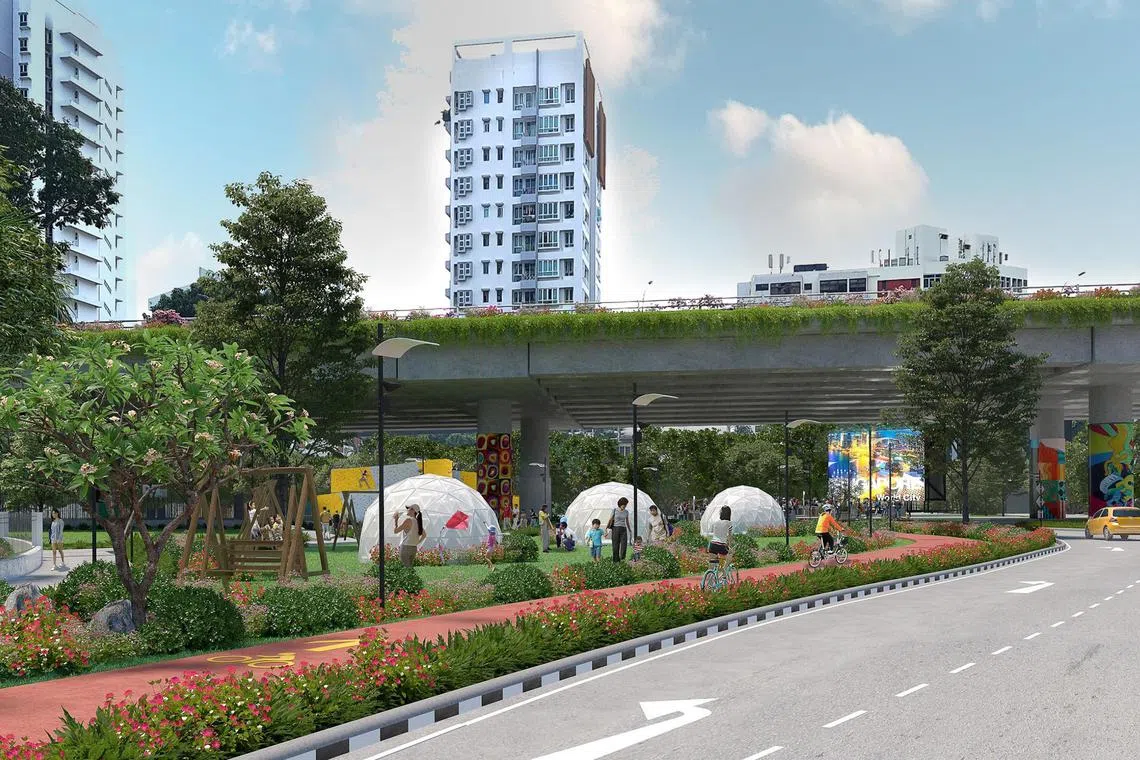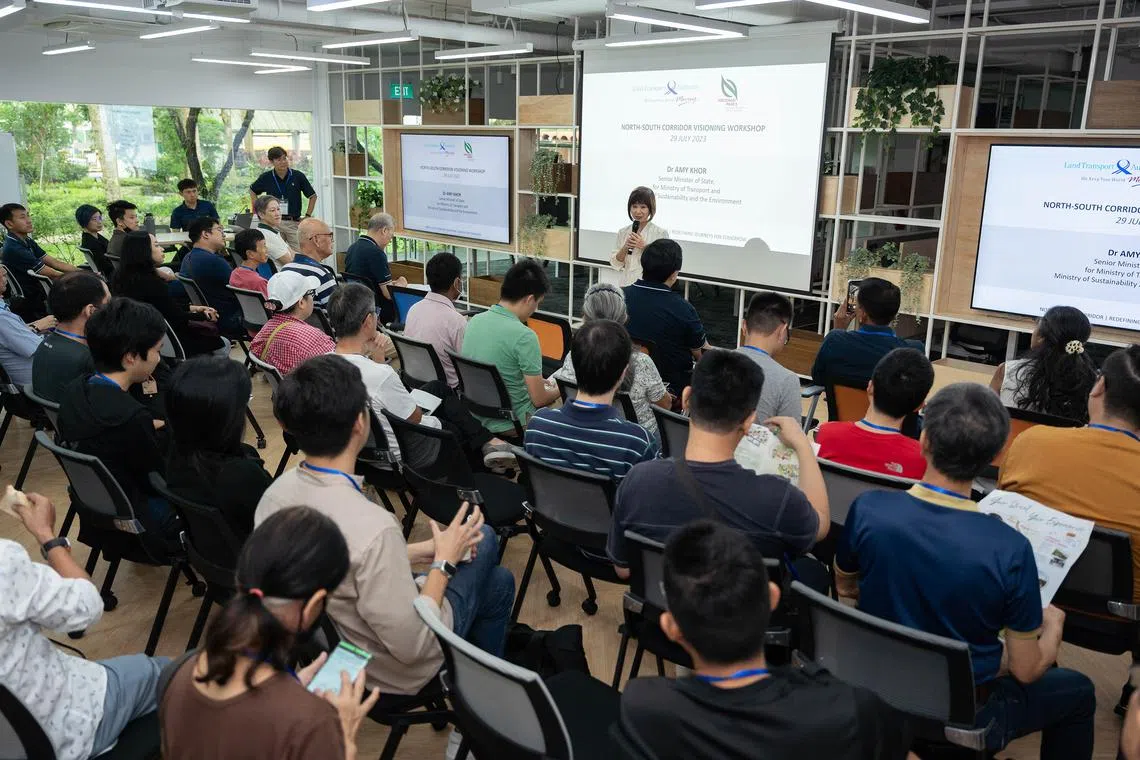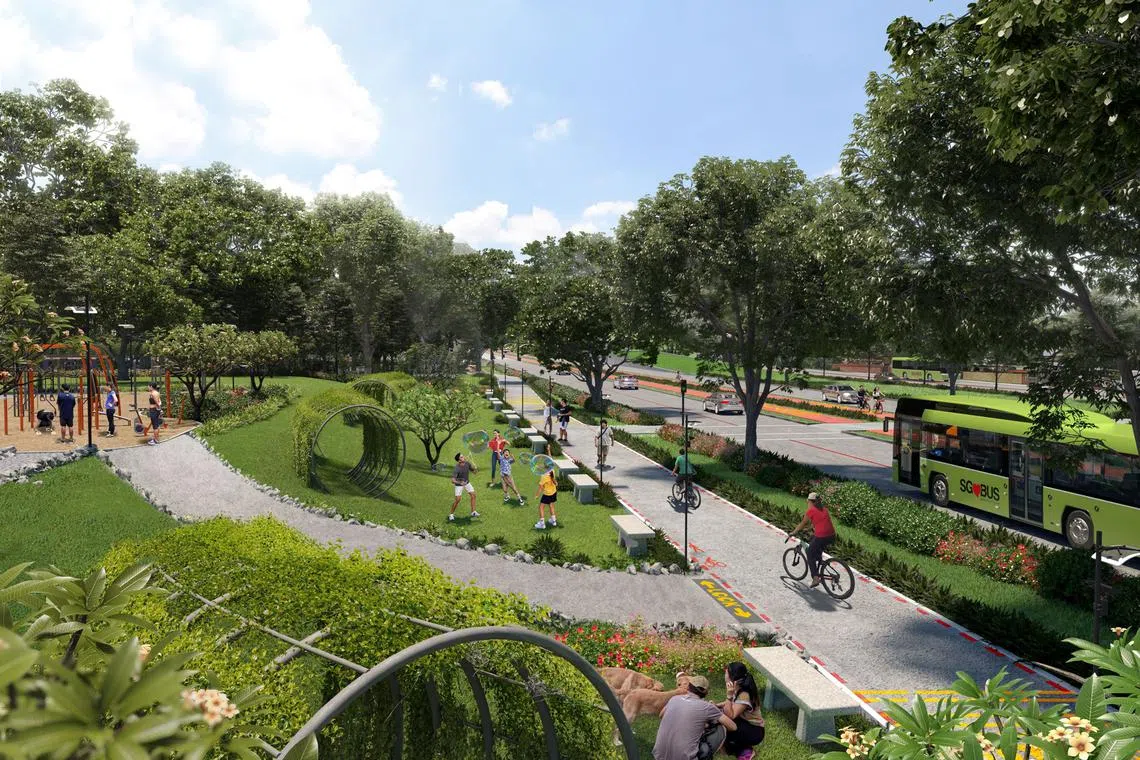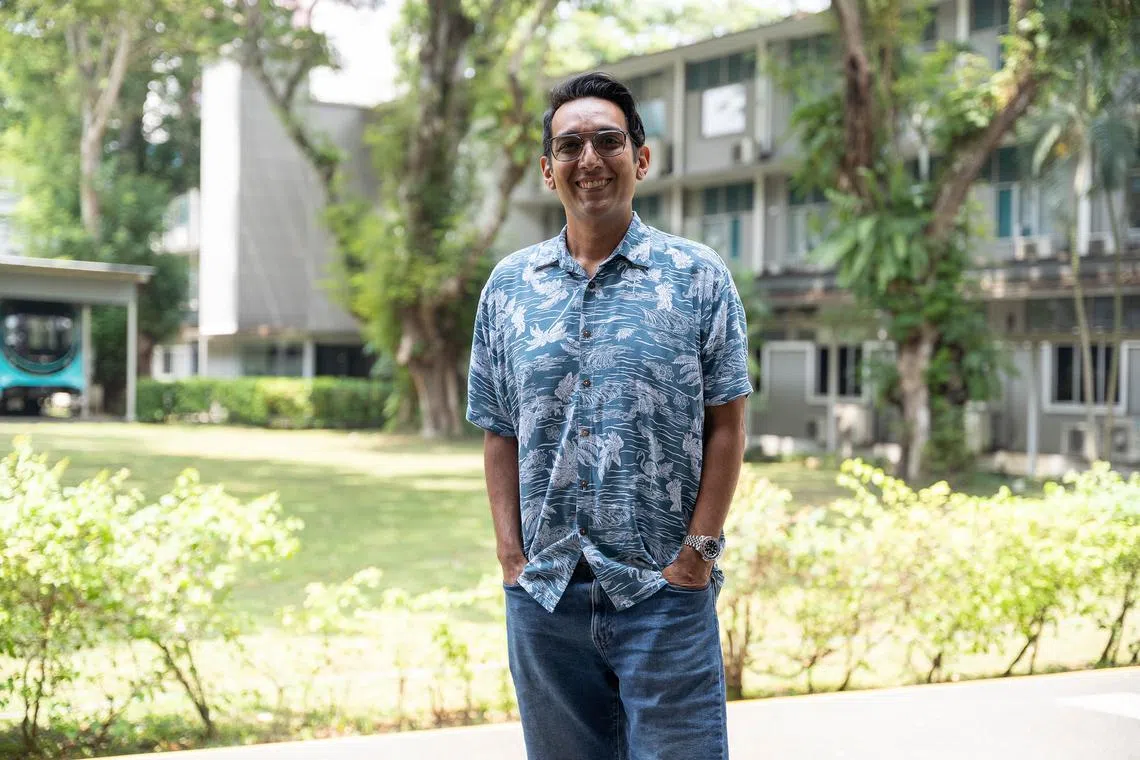North-South Corridor could free up 30 football fields of road space in S’pore for other uses
Sign up now: Get ST's newsletters delivered to your inbox

An artist's impression of Kampung Java Road after road tunnels for the North-South Corridor are completed.
PHOTO: LTA
Follow topic:
SINGAPORE – A 21.5km transport corridor stretching from Admiralty to Rochor, which will be completed in phases from 2027, could free up surface road space the size of about 30 football fields for other uses, Senior Minister of State for Transport Amy Khor said on Saturday.
This could mean wider footpaths, dedicated cycling paths and bus lanes, more greenery and new community spaces for those living and working near the upcoming North-South Corridor (NSC).
Surface road traffic along this stretch will be diverted to an 8.8km viaduct in the north and 12.3km of underground road tunnels in the south that are currently being constructed as part of the $7.47 billion project, freeing up space for these amenities, Dr Khor said.
She was speaking at a public engagement session jointly organised by the Land Transport Authority (LTA) and the National Parks Board (NParks) to gather ideas and feedback on how best to redesign the freed-up road space.
Attendees included grassroots volunteers and members of NParks’ Friends of the Parks initiative.
Saturday’s session was the first in a series of “visioning” workshops that will be held by the authorities over the next six months. An online survey
Insights gathered from these public engagements will be used to develop a detailed masterplan for the NSC, which will be unveiled some time in 2025, LTA and NParks said.
This masterplan will then be subjected to further public consultations before it is implemented.
“(Thirty football fields) is a lot of space in land-scarce Singapore. Valuable space,” Dr Khor told the 37 participants at Saturday’s workshop.
“What we are working on today is how to reimagine, rejuvenate, repurpose these spaces.”
Calling the NSC a “game changer”, Dr Khor said significant progress has been made on what is a complex, complicated project, with 50 per cent of the foundations for the underground tunnels now completed.
It was reported earlier that the viaduct portion of the NSC from Admiralty Road West to Lentor Avenue is set to open in 2027. The remaining road tunnels from Lentor Avenue to East Coast Parkway will be ready only in 2029,
Dr Khor said on Saturday: “It is a challenge to build this North-South Corridor, as it runs through very densely built-up areas... With Covid-19 and supply chain disruptions, there has been some delay.”
Thanking “long-suffering” residents and businesses for their patience, she added that the spaces being worked on will be returned to the community in a better shape as soon as possible.
She said: “If they are completed first, we will let you enjoy these stretches before the completion of the whole project.”

Senior Minister of State for Transport Amy Khor speaking at the public engagement session on Saturday.
ST PHOTO: BRIAN TEO
Running parallel to the Central Expressway (CTE), the NSC is expected to help alleviate the heavy traffic on the CTE as well as major arterial roads nearby like Thomson and Marymount roads.
It will also support developments in northern Singapore.
Bus travelling times from Woodlands, Sembawang, Yishun and Ang Mo Kio to the city could be cut by up to 30 minutes, as the buses will have access to dedicated and continuous bus lanes, coupled with bus priority signals, LTA said previously.
The NSC also forms part of the 34km Central Corridor, a recreational route by NParks that will link to the Round Island Route, Coast-to-Coast Trail and various parks and park connectors.
Pedestrians, as well as riders on active mobility devices and bicycles, will be able to use the paths along the NSC to get to the park connector network, as well as cycling paths within the Housing Board towns along the corridor.

An artist’s impression of how Marymount Road could look like after road tunnels for the North-South Corridor are completed.
PHOTO: LTA
A common theme during Saturday’s discussions was the need for the authorities to go beyond just creating recreational spaces along the NSC, and to make them places where people can come together.
Many participants called for the NSC to be a green corridor, with native trees to provide shade for pedestrians and cyclists.
They also flagged the importance of ensuring that the NSC provides seamless transport for both young and old, as well as those with disabilities and mobility issues.
Other ideas included providing ample rest stops, washrooms and shower facilities along the corridor, allocating spaces for events like pasar malams (night markets), and adding Instagram-worthy spots for both locals and tourists.
Mr Noel Davenash, 45, who works as a general manager in the retail sector, was one of the participants at Saturday’s workshop.
The Sennett estate resident hopes the NSC will provide another avenue for Singaporeans to enjoy the outdoors, and be a transport node for those who do not want to drive.
Among the suggestions raised was for the NSC to prioritise pedestrians instead of vehicles.
He said one possibility is for the footpaths along the NSC to be continuous.

Sennett estate resident Noel Davenash was one of the participants at Saturday’s workshop.
ST PHOTO: BRIAN TEO
Another is for traffic lights along the corridor to be in favour of pedestrians, rather than motorists.
Ms Vivian Song, 47, who lives close to the upcoming NSC in Ang Mo Kio, hopes an experience similar to the Botanic Gardens or Gardens by the Bay can be brought to the doorsteps of those living in the heartland.
“They can enjoy concerts, bring their families there, and there can be food festivals as well,” said the part-time administrative worker.
LTA chief executive Ng Lang, who was also at Saturday’s session, said: “This is really a chance for us to create something very special.”


